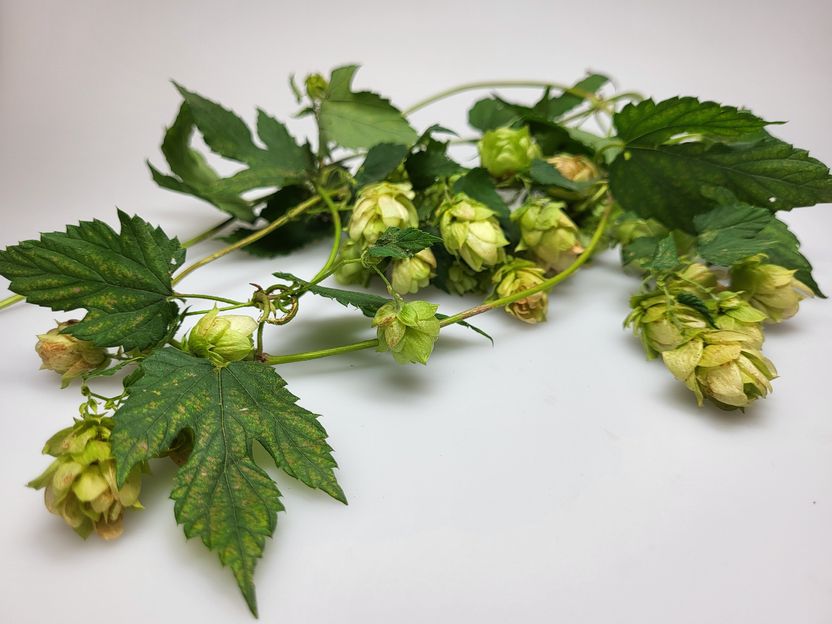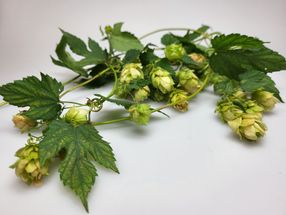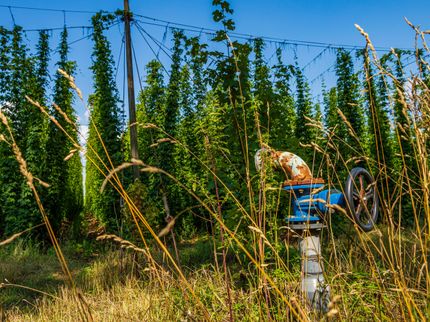News about beer aroma
More than 20 year old assumption disproved
Advertisement
The constituents of hops not only make beer durable and bitter, but can also significantly influence its aroma. An important key odorant in hops is Linalool, which has a floral and citrus-like scent. Under the leadership of the Leibniz Institute of Food Systems Biology at the Technical University of Munich, a Freising research team has now disproved a roughly 20-year-old assumption about this odorant. The new study contributes to a better understanding of changes in beer bouquet during the brewing process and beer aging.

Real hops
Gisela Olias

Dr. Klaas Reglitz
Joseph Krpelan


Two molecular variants of the odorant linalool are found in hops and beer: the enantiomers (R)- and (S)-linalool. Both molecules consist of the same number and type of atoms, which are bonded together in the same way. Nevertheless, they have a different spatial structure and differ like a picture from its mirror image. This "small" but nevertheless essential difference is also reflected in different odor intensities of the molecules.
In addition, it has long been known that the beer aroma changes during the brewing process and storage because, among other things, part of the (R)-linalool predominant in hops is transformed into (S)-linalool. Previously, based on a 1999 paper, researchers assumed that odor threshold concentrations of (R)-linalool were about a factor of 80 lower than those of (S)-linalool. Put simply, they assumed that (R)-linalool has a much stronger influence on beer aroma than its mirror-image counterpart. However, reliable data on the odor thresholds of both substances were lacking.
Preparative method optimized
To close this knowledge gap and enable more precise predictions of changes in beer aroma, the team led by brewing and beverage technologist Klaas Reglitz and food chemist Martin Steinhaus from the Leibniz Institute in Freising first optimized a preparative method. In close cooperation with the Weihenstephan Research Center for Brewing and Food Quality, the researchers thus succeeded for the first time in isolating enantiomerically pure (S)-linalool.
Having the pure substance available in sufficient quantities was an indispensable prerequisite for determining the specific odor threshold concentrations of the two odorant variants in water and unhopped beer using a trained sensory panel. This is because, to date, only (R)-linalool is commercially available as a pure substance.
As the team showed, the thresholds of (R)- and (S)-linalool in water were 0.82 and 8.3 micrograms per kilogram, respectively. In unhopped beer, the team determined thresholds of 6.5 micrograms per kilogram for (R)-linalool and 53 micrograms per kilogram for (S)-linalool.
Influence of (R)-linalool overestimated
"Our results thus confirm the previously postulated higher odor potency of (R)-linalool. However, they also refute the previous assumption that the odor threshold concentrations of the two enantiomers are extremely different. Instead, the study shows that the difference is only about eight to ten times," says Martin Steinhaus, head of Section I and the Food Metabolome Chemistry working group at the Leibniz Institute.
First author Klaas Reglitz adds: "The conversion of (R)- to (S)-linalool thus does not have as great an influence on beer aroma as has long been assumed. Thanks to our study, we now better understand how and why the aroma changes during storage."
Note: This article has been translated using a computer system without human intervention. LUMITOS offers these automatic translations to present a wider range of current news. Since this article has been translated with automatic translation, it is possible that it contains errors in vocabulary, syntax or grammar. The original article in German can be found here.



























































